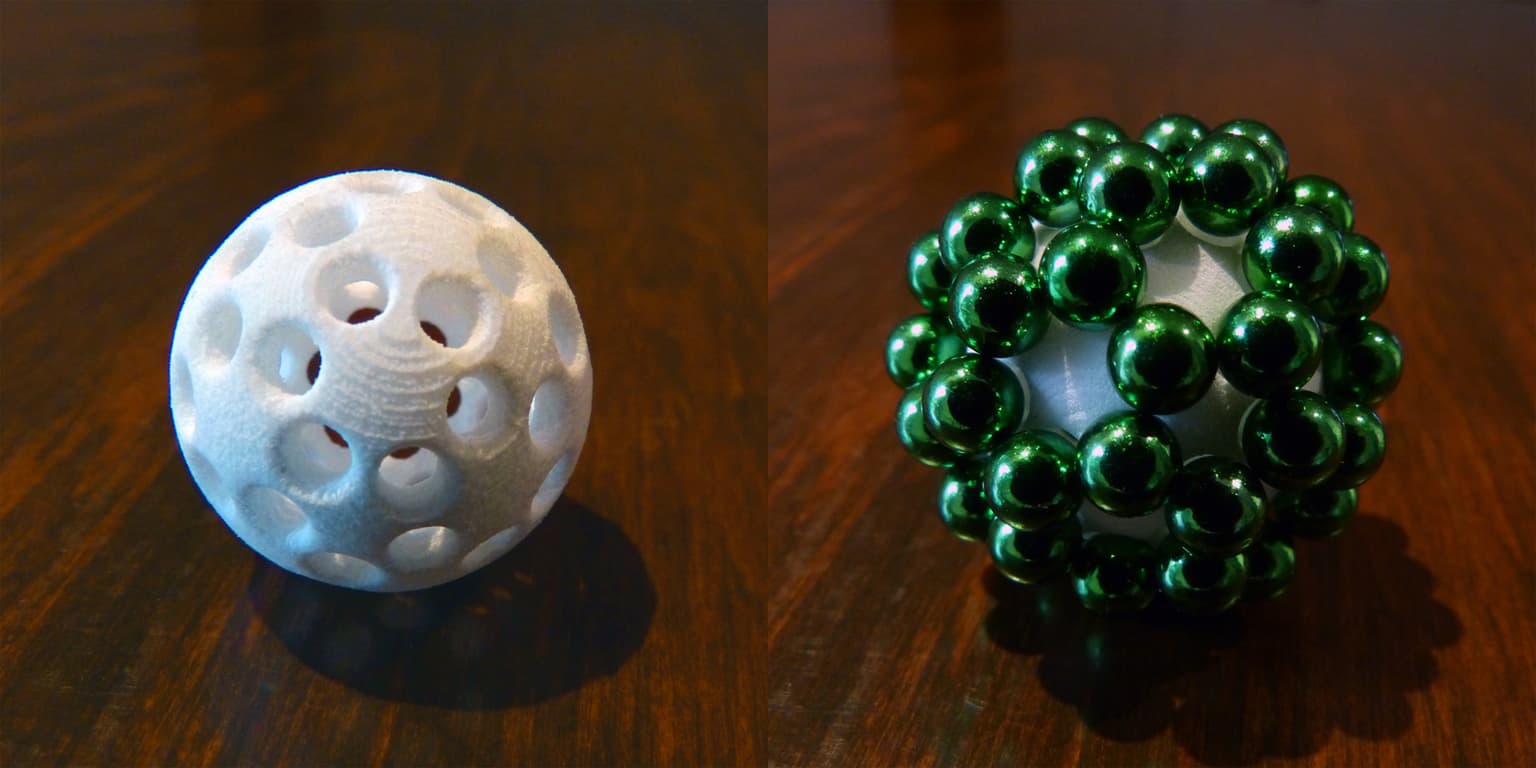Henry Segerman and Rosa Zwier
Artists
Henry Segerman
Associate Professor of Mathematics
Oklahoma State University
Stillwater, Oklahoma, USA
Statement
Henry Segerman is an assistant professor in the Department of Mathematics at Oklahoma State University. His mathematical research is in 3-dimensional geometry and topology, and concepts from those areas often appear in his work. Other artistic interests involve procedural generation, self reference, ambigrams and puzzles. Rosa Zwier completed a Bachelor of Science with a major in Pure Mathematics at the University of Melbourne last year. She came to love geometry after discovering spherical magnets and the amazing possibilities of what can be built with them. She has since been introduced to the world of mathematical art and has become passionate about it.
Artworks

"Buckyball" Buckyball
3 cm x 3 cm x 3 cm
PA 2200 Plastic, Selective-Laser-Sintered and Spherical Neodymium Magnets
2013